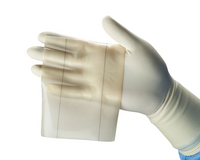
Photo from wikipedia
Cutaneous innervation is increasingly recognized as a major element of skin physiopathology through the neurogenic inflammation driven by neuropeptides that are sensed by endothelial cells and the immune system. To… Click to show full abstract
Cutaneous innervation is increasingly recognized as a major element of skin physiopathology through the neurogenic inflammation driven by neuropeptides that are sensed by endothelial cells and the immune system. To investigate this process in vitro, models of innervated tissue-engineered skin (TES) were developed, yet exclusively with murine sensory neurons extracted from dorsal root ganglions. In order to build a fully human model of innervated TES, we used induced pluripotent stem cells (iPSC) generated from human skin fibroblasts. Nearly 100% of the iPSC differentiated into sensory neurons were shown to express the neuronal markers BRN3A and β3-tubulin after 19 days of maturation. In addition, these cells were also positive to TRPV1 and neurofilament M, and some of them expressed Substance P, TrkA and TRPA1. When stimulated with molecules inducing neuropeptide release, iPSC-derived neurons released Substance P and CGRP, both in conventional monolayer culture and after seeding in a 3D fibroblast-populated collagen sponge model. Schwann cells, the essential partners of neurons for function and axonal migration, were also successfully differentiated from human iPSC as shown by their expression of the markers S100, GFAP, p75 and SOX10. When cultured for one additional month in the TES model, iPSC-derived neurons seeded at the bottom of the sponge formed a network of neurites spanning the whole TES up to the epidermis, but only when combined with mouse or iPSC-derived Schwann cells. This unique model of human innervated TES should be highly useful for the study of cutaneous neuroinflammation. STATEMENT OF SIGNIFICANCE: The purpose of this work was to develop in vitro an innovative fully human tissue-engineered skin enabling the investigation of the influence of cutaneous innervation on skin pathophysiology. To reach that aim, neurons were differentiated from human induced pluripotent stem cells (iPSCs) generated from normal human skin fibroblasts. This innervated tissue-engineered skin model will be the first one to show iPSC-derived neurons can be successfully used to build a 3D nerve network in vitro. Since innervation has been recently recognized to play a central role in many human skin diseases, such as psoriasis and atopic dermatitis, this construct promises to be at the forefront to model these diseases while using patient-derived cells.
Journal Title: Acta biomaterialia
Year Published: 2018
Link to full text (if available)
Share on Social Media: Sign Up to like & get
recommendations!